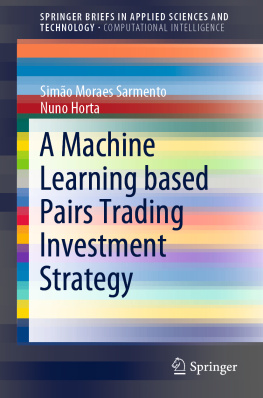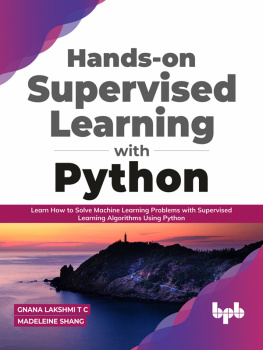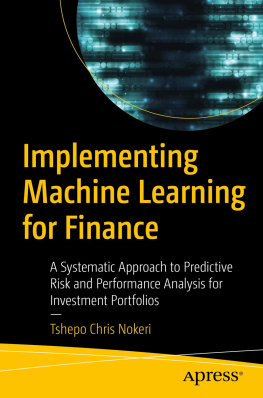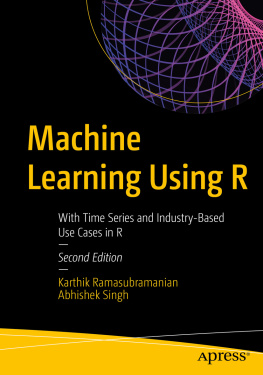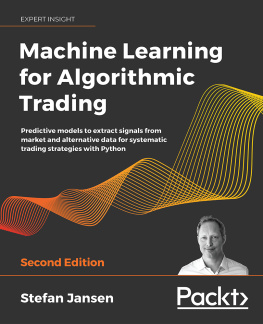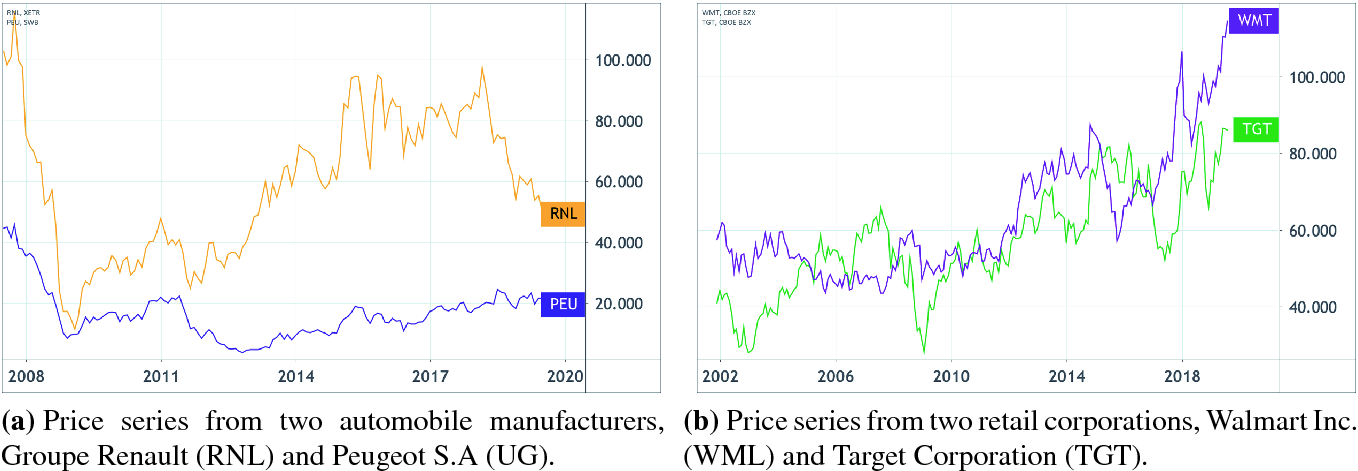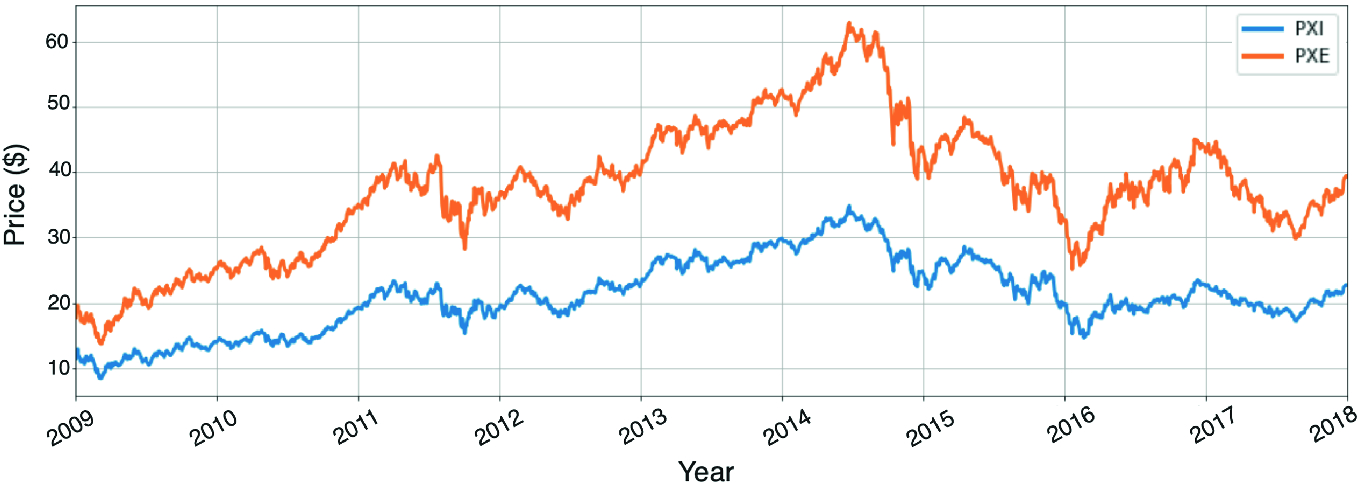SpringerBriefs in Applied Sciences and Technology SpringerBriefs in Computational Intelligence
Series Editor
Janusz Kacprzyk
Systems Research Institute, Polish Academy of Sciences, Warsaw, Poland
SpringerBriefs present concise summaries of cutting-edge research and practical applications across a wide spectrum of fields. Featuring compact volumes of 50 to 125 pages, the series covers a range of content from professional to academic.
More information about this subseries at http://www.springer.com/series/10618 Typical publications can be:
A timely report of state-of-the art methods
An introduction to or a manual for the application of mathematical or computer techniques
A bridge between new research results, as published in journal articles
A snapshot of a hot or emerging topic
An in-depth case study
A presentation of core concepts that students must understand in order to make independent contributions
SpringerBriefs are characterized by fast, global electronic dissemination, standard publishing contracts, standardized manuscript preparation and formatting guidelines, and expedited production schedules.
On the one hand,SpringerBriefs in Applied Sciences and Technology are devoted to the publication of fundamentals and applications within the different classical engineering disciplines as well as in interdisciplinary fields that recently emerged between these areas. On the other hand, as the boundary separating fundamental research and applied technology is more and more dissolving, this series is particularly open to trans-disciplinary topics between fundamental science and engineering.
Indexed by EI-Compendex, SCOPUS and Springerlink.
Simo Moraes Sarmento
Instituto de Telecomunicaes, IST, University of Lisbon, Lisbon, Portugal
Nuno Horta
Instituto de Telecomunicaes, IST, University of Lisbon, Lisbon, Portugal
ISSN 2191-530X e-ISSN 2191-5318
SpringerBriefs in Applied Sciences and Technology
ISSN 2625-3704 e-ISSN 2625-3712
SpringerBriefs in Computational Intelligence
ISBN 978-3-030-47250-4 e-ISBN 978-3-030-47251-1
https://doi.org/10.1007/978-3-030-47251-1
The Editor(s) (if applicable) and The Author(s), under exclusive license to Springer Nature Switzerland AG 2021
This work is subject to copyright. All rights are solely and exclusively licensed by the Publisher, whether the whole or part of the material is concerned, specifically the rights of translation, reprinting, reuse of illustrations, recitation, broadcasting, reproduction on microfilms or in any other physical way, and transmission or information storage and retrieval, electronic adaptation, computer software, or by similar or dissimilar methodology now known or hereafter developed.
The use of general descriptive names, registered names, trademarks, service marks, etc. in this publication does not imply, even in the absence of a specific statement, that such names are exempt from the relevant protective laws and regulations and therefore free for general use.
The publisher, the authors and the editors are safe to assume that the advice and information in this book are believed to be true and accurate at the date of publication. Neither the publisher nor the authors or the editors give a warranty, expressed or implied, with respect to the material contained herein or for any errors or omissions that may have been made. The publisher remains neutral with regard to jurisdictional claims in published maps and institutional affiliations.
This Springer imprint is published by the registered company Springer Nature Switzerland AG
The registered company address is: Gewerbestrasse 11, 6330 Cham, Switzerland
Acronyms
ADF
Augmented Dickey-Fuller
ANN
Artificial neural network
ARMA
Autoregressivemoving-average
DBSCAN
Density-based spatial clustering of applications with noise
ETF
Exchange-traded fund
FNN
Feedforward neural network
GARCH
Generalized autoregressive conditional heteroskedasticity
LSTM
Long short-term memory
MAE
Mean absolute error
MDD
Maximum drawdowm
MLP
Multilayer perceptron
MSE
Mean squared error
OPTICS
Ordering points to identify the clustering structure
PCA
Principal component analysis
RNN
Recurrent neural network
ROI
Return on investment
SR
Sharpe ratio
SSD
Sum of Euclidean squared distance
t-SNE
T-distributed Stochastic Neighbor Embedding
Contents
The Author(s), under exclusive license to Springer Nature Switzerland AG 2021
S. Moraes Sarmento, N. Horta A Machine Learning based Pairs Trading Investment Strategy SpringerBriefs in Applied Sciences and Technology https://doi.org/10.1007/978-3-030-47251-1_1
1. Introduction
Simo Moraes Sarmento
(1)
Instituto de Telecomunicaes, IST, University of Lisbon, Lisbon, Portugal
Simo Moraes Sarmento (Corresponding author)
Email:
Keywords
Pairs Trading Unsupervised Learning Time-series forecasting
1.1 Topic Overview
Pairs Trading is a well-known investment strategy developed in the 1980s. It has been employed as one important long/short equity investment tool by hedge funds and institutional investors Cavalcante et al. [
Once the pairs have been identified, the investor may proceed with the strategys second step. The underlying premise is that if two securities price series have been moving close in the past, then this should persist in the future. Therefore, if an irregularity occurs, it should provide an interesting trade opportunity to profit from its correction. To find such opportunities, the spread between the two constituents of the pairs must be continuously monitored. When a statistical anomaly is detected, a market position is entered. The position is exited upon an eventual spread correction. It is interesting to observe that this strategy relies on the relative value of two securities, regardless of their absolute value.
We proceed to introduce how the strategy may be applied using an example from this work. A more formal description concerning the trading setup is presented in Sect.. The investor may calculate the mean value of the spread formed by the two constituents of the pair, as well as its standard deviation. These values describe the statistical behaviour known for that pair and which the investor expects to remain approximately constant in the future.
Fig. 1.1
Price series which could potentially form profitable pairs

